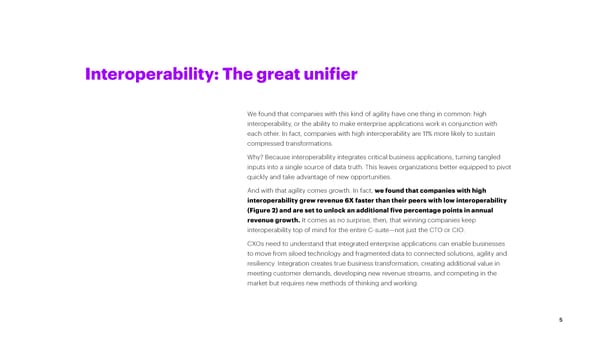Interoperability: The great unifier We found that companies with this kind of agility have one thing in common: high interoperability, or the ability to make enterprise applications work in conjunction with each other. In fact, companies with high interoperability are 11% more likely to sustain compressed transformations. Why? Because interoperability integrates critical business applications, turning tangled inputs into a single source of data truth. This leaves organizations better equipped to pivot quickly and take advantage of new opportunities. And with that agility comes growth. In fact, we found that companies with high interoperability grew revenue 6X faster than their peers with low interoperability (Figure 2) and are set to unlock an additional five percentage points in annual revenue growth. It comes as no surprise, then, that winning companies keep interoperability top of mind for the entire C-suite—not just the CTO or CIO. CXOs need to understand that integrated enterprise applications can enable businesses to move from siloed technology and fragmented data to connected solutions, agility and resiliency. Integration creates true business transformation, creating additional value in meeting customer demands, developing new revenue streams, and competing in the market but requires new methods of thinking and working. 5
 Full Report Page 4 Page 6
Full Report Page 4 Page 6